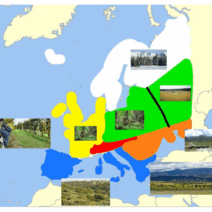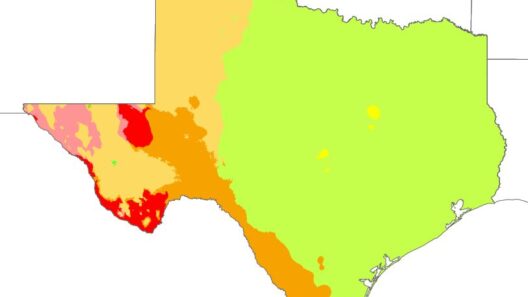The oceans, often perceived merely as vast expanses of water, are, in fact, the quintessential players in the Earth’s climate system. They are not merely passive observers of climatic phenomena; rather, they operate as a dynamic engine that drives and shapes climates across the globe. Understanding the oceans’ multifaceted roles in climate regulation is paramount for grasping broader environmental dynamics and addressing climate change effectively.
The immense volume of the oceans—covering approximately 71% of the Earth’s surface—affects weather patterns, atmospheric composition, and even the distribution of species. Water takes longer to heat and cool compared to land, which enables oceans to act as thermal reservoirs. This phenomenon stabilizes global temperatures, mitigating extremes in weather. However, as temperatures rise due to escalating greenhouse gas emissions, this balance is increasingly challenged, resulting in more pronounced climatic effects.
One of the most significant mechanisms by which the oceans influence climate is through their capacity to absorb carbon dioxide. The oceans have absorbed approximately 30% of the carbon dioxide emitted into the atmosphere since the start of the Industrial Revolution. This process, known as oceanic sequestration, plays a crucial role in regulating atmospheric CO2 levels. However, this absorption comes at a cost; as more carbon dioxide is dissolved in ocean waters, it leads to ocean acidification, which poses severe risks to marine ecosystems and, consequently, to human livelihoods dependent on these resources.
The role of the oceans in regulating heat is equally critical. Ocean currents, particularly the global conveyor belt, are responsible for transporting heat around the planet. Major currents such as the Gulf Stream and the Humboldt Current help deliver warm water from the equator to the poles, influencing regional climates and weather patterns. Disruptions to these currents due to climate change can lead to profound consequences, including altered precipitation patterns, extreme weather events, and shifts in marine biodiversity. For example, the sluggishness of the Gulf Stream could exacerbate sea-level rise along the East Coast of the United States, leading to increased flooding and ecological disruption.
Additionally, the oceans are intimately linked to the water cycle. Evaporation from the ocean’s surface contributes to cloud formation and precipitation patterns vital for rainfall distribution around the world. This relationship illustrates the interconnectedness of ocean health and terrestrial climate, as issues like ocean warming can lead to altered rainfall patterns, which in turn impact agriculture, freshwater access, and overall ecosystem health.
Climate phenomena such as El Niño and La Niña exemplify the ocean’s influence on weather and climate variability. These cyclical events, caused by variations in sea surface temperatures in the tropical Pacific, can lead to significant disruptions in weather patterns worldwide. For instance, El Niño can result in increased rainfall and flooding in some regions while causing droughts in others. Understanding these systems is essential for predicting climate-related events, aiding communities in preparing for potential impacts.
The ecological ramifications of ocean-climate interactions are far-reaching. As ocean temperatures rise, marine species are forced to adapt, migrate, or face extinction. Coral reefs, often referred to as the “canaries in the coal mine” for climate change, are particularly vulnerable to increasing sea temperatures and acidification. These biodiverse ecosystems support myriad marine species and serve as buffers against storm surges, yet they are rapidly declining. The loss of coral reefs not only threatens marine biodiversity but also jeopardizes coastal economies reliant on tourism and fishing.
The interplay between ocean health and human health cannot be overstated. Clean, stable oceans contribute to food security, provide livelihoods, and play a critical role in global climate regulation. Conversely, the degradation of these aquatic systems due to pollution, overfishing, and climate change compromises these benefits. Sustainable practices are essential to preserve marine ecosystems, ensuring their capacity to continue functioning as a climate regulator and resource provider.
As stakeholders and policymakers gain a deeper understanding of the oceans’ role in climate systems, there emerges an urgent call to action. Embracing integrated approaches that consider the interconnectedness of oceanic and atmospheric conditions is vital. Innovations in marine conservation, restoration ecologies, and sustainable resource management are critical to safeguarding ocean health, thereby enhancing the resilience of both marine and terrestrial ecosystems against the backdrop of climate change.
Investing in ocean research and technology can yield substantial benefits. Enhanced ocean monitoring systems can improve forecasting of climate-related events, helping communities adapt to emerging challenges. Initiatives such as marine protected areas serve to restore habitats and bolster the resilience of marine species. Such efforts represent not only an environmental imperative but also a strategic approach to mitigate the broader impacts of climate change on humanity.
In conclusion, the oceans are integral to our climate, acting as a vast engine that drives thermal regulation, carbon sequestration, and the intricate web of life on Earth. As we confront the formidable challenge of climate change, it is imperative to recognize and valorize the oceans’ role in this equation. Embracing their significance and acting to protect their health is not just an environmental responsibility—it is an indispensable pathway to a sustainable future. The blue engine of our planet holds the key to understanding climate dynamics and fostering resilience against the looming threats posed by global warming. By nurturing our oceans, we also safeguard our future.







